In our final installment in the series on gut health, we’re covering a rather important topic – resistant starch! It probably doesn’t sound like much at first considering it’s a starch that actually resists digestion.
It escapes from the small intestine during digestion in healthy individuals. Instead, it is converted into short-chain fatty acids by bacteria in the intestines.
Non-resistant or regular starches are going to fully digest in a healthy individual, and that probably sounds like the ideal outcome, but resistant starch contain unique benefits.
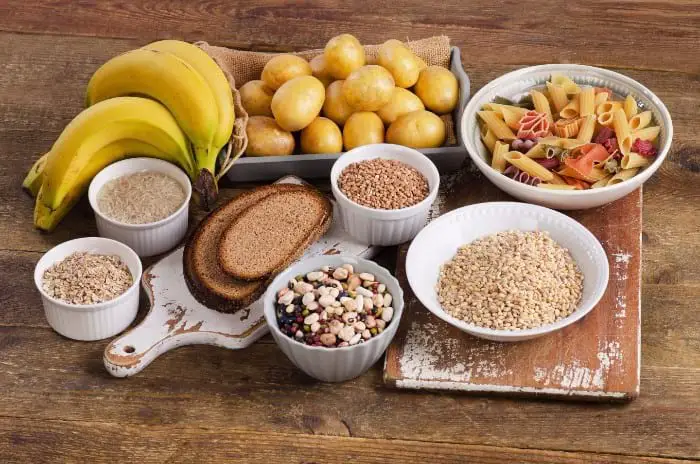
It’s similar to soluble fibre which we need for optimal health in the diet, despite its inability to be digested. It’s not as though all resistant starch is created equal, though.
Today, we’ll discuss the different types of resistant starch, food sources, its benefits, and how it ties into gut health.
Read more in our gut health series!
8 Foods That Heal The Digestive System
The WORST Foods For Gut Health
Key Signs You Have An Unhealthy, Leaky Gut
Types of resistant starch
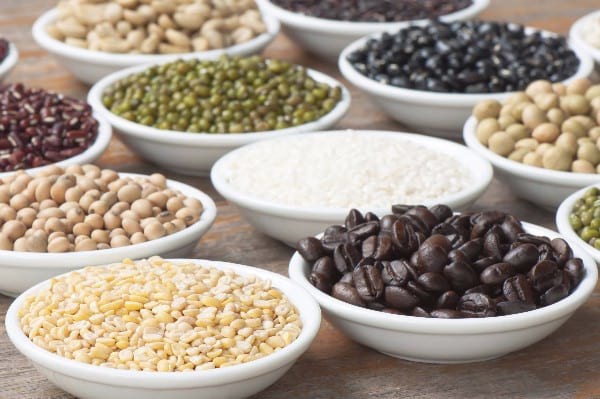
First, let’s talk about what makes a starch resistant or regular. It comes down to the polysaccharides found in any given starch. There are two types: amylose and amylopectin.
Amylopectin is broken down quickly, and it’s highly branched which means there’s more room for digestion. It also produces a large rise in insulin – something we generally want to avoid with starches.
Amylose is a straight chain which decreases the amount of surface area left for digestion, and ensures slower absorption of food. This is the primary polysaccharide found in resistant starches.
Breaking it down further, there are four different classifications of resistant starch, although it’s important to note that some combinations of these types exist too.
Generally speaking, they can be divided into a few easy-to-understand categories.
- Type 1. This includes grains, seeds, and legumes which resist digestion due to them getting bound to the fibrous walls of the cells.
- Type 2. This includes some starchy, raw, underripe foods like raw potato or green bananas. Letting a banana ripen will reduce its resistant starch content and transform it into a regular starch.
- Type 3. This includes the starch that forms when certain starches such as potatoes and rice are cooked and then cooled. During a process called retrogradation, digestible starches are converted to resistant starches during the cooling process which can help reduce glycaemic load of those foods.
- Type 4. This type of starch is man-made and formed through a chemical process.
Resistant starch formed via chemical processes is not equal to resistant starch from real food. Modified and fortified food isn’t as easy for our bodies to use efficiently.
Synthetic resistant starch like hi-maize resistant starch is added to packaged foods like breads and crackers.
The benefits of resistant starch
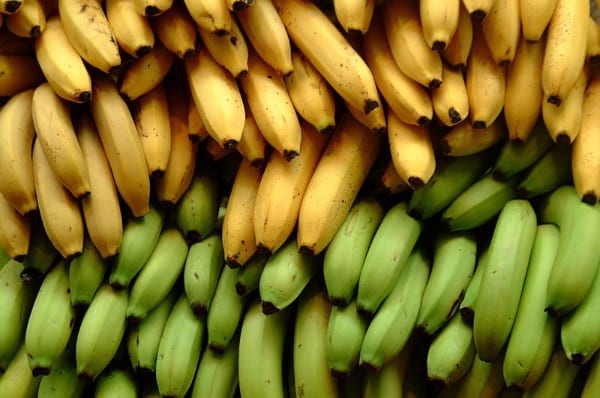
Now, let’s get into the reasons why resistant starch is an important part of any healthy diet – especially a gut-healing protocol!
Foods that contain predominantly resistant starch are a good source of prebiotics which help probiotics do their job and keep the bacteria balance in check.
Prebiotic foods change the composition of gut flora, improving immunity. The “prebiotic effect” is also associated with reduced risk of cancer-promoting enzymes due to its impacts on the immune system.
Pathogenic bacteria is more susceptible to growth without a good base line of healthy bacteria in the gut, considering our epithelial tissue (gut lining) is dependent on gut flora!
It won’t regenerate without an abundance of good stuff so we have to make sure to keep that bacteria fed with the right foods.
When our bacteria begins to break down the non-digestible fibres from resistant starch and prebiotic foods, they start to produce short-chain fatty acids. We love our fatty acids.
The quality and quantity of SCFAs present in our gut depends on the types and amounts of carbohydrates we consume. When it comes to starch, quality matters, and getting in those resistant starch sources is important for this balance.
We get some butyric acid in the mix which helps the intestinal lining stay strong – one of the reasons why ghee and butter are one of the healthiest foods for the gut.
It also encourages regulation of electrolyte levels including magnesium, calcium, sodium and water. This balance is a delicate one, but it’s essential to good health.
SCFAs combat leaky gut in other ways too, by increasing nutrient and mineral absorption and circulation. If you’re taking in a nutrient-dense diet but your digestion is still compromised, or your gut flora is weak, you won’t actually be absorbing all those healthy properties at all!
Resistant starch also helps stimulate blood flow to the gut, decreasing the growth of bad bacteria, and preventing absorption of toxic compounds which are a leaky gut’s worst nightmare, and one of the primary causes and drivers of poor intestinal lining integrity.
Like fibre, resistant starch also acts as a digestive aid and may have mild laxative effects. Digestion is a good marker of gut health overall, so by adding bulk and water to the stool making it heavier, it can help relieve symptoms of irritable bowel syndrome, diverticulitis, constipation, and ulcerative colitis.
Food sources of resistant starch
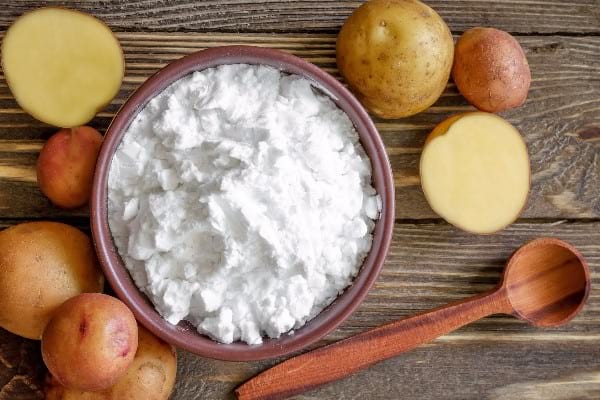
So, you want to add some resistant starch to the diet. Where do you start? Here’s a list of those good-for-the-gut foods.
- Oatmeal. Raw oats contain the most resistant starch, so setting your oats in water/milk overnight to make “overnight oats” will give you a boost. You could also cool oats after cooking on heat to increase resistant starch. Per 100 grams, you get around 3.6 grams of resistant starch.
- Cooked and cooled rice. Up your resistant starch intake by cooking and cooling your rice. Adding some coconut oil to the mix can also help with insulin levels. You can do this with brown rice or white rice.
- Beans and legumes. A single serving contains 1-4 grams of resistant starch, making them a good choice. Give them a soak beforehand to reduce phytic acid which can damage the gut lining.
- Potato flour. Raw potato starch is a good grain-free wheat substitute for baking or other flour uses. Generally speaking, it’s used as a thickener so it’s easily added to oatmeal or smoothies.
- Cooked and cooled potatoes. White potatoes are often seen as inferior to sweet potatoes, but their resistant starch when cooked, cooled, and consumed is pretty impressive. It’s important to note that resistant starch is less present when reheated, so make sure to enjoy your spuds cold! Potato salad, anyone?
- Green bananas. When bananas ripen, their resistant starch decreases, being replaced by glucose. Instead, enjoy them green. You can cook and bake them like plantains for a fun and healthy dessert.
Generally speaking, any carbs, starches, and grains will contain a fair amount of resistant starch when cooked and cooled. It’s a great habit to get into if you want to make your carbs count!
How much resistant starch should you eat?
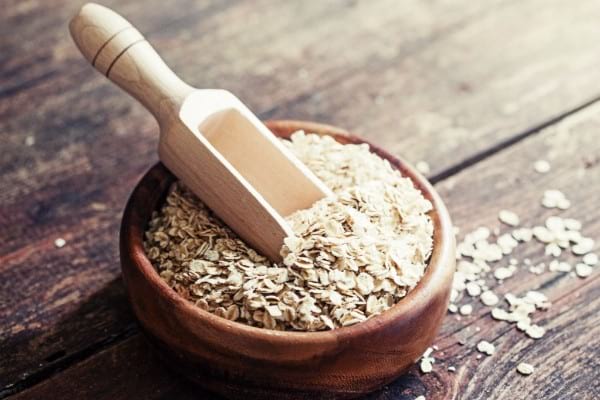
Around 40-50 grams of resistant starch per day is a safe and tolerable amount for most adults. 6-12 grams per day could provide the benefits of resistant starch, so aiming for around 20 is perfectly healthy.
Higher amounts could result in digestive distress and have a worsening impact on the gut, so avoid overdoing it. It’s best ingested in the form of solid foods versus liquid.
The best sources from real sources rather than synthetic, and it’s good to pair it with other foods. Finally, it’s something you might do best with increasing amounts over time; some people need to build up a tolerance to resistant starch.
We hope you learnt a ton in our gut health series this month. When it comes down to it, diet plays the biggest factor in the integrity of the gut lining and the composition of bacteria that lives there, so nourishing the gut is the absolute key to good health!
Resistant starch is a powerhouse for that bacteria, and we hope you have luck including more into your daily diet.
Music, mountains, dogs, travel, food and friends.


” Cooked and cooled potatoes. White potatoes are often seen as inferior to sweet potatoes, but their resistant starch when cooked, cooled, and consumed is pretty impressive. It’s important to note that resistant starch is less present when reheated, so make sure to enjoy your spuds cold! Potato salad, anyone?”
Actually, reheating the potatoes increases the amount of resistant starch. It’s not the temperature that converts the starch itself, it’s the conversion process from the temperature change. You don’t need to endure cold potatoes to enjoy resistant starch.
Just a friendly reminder that copypasta should be investigated, and has very little resistant starch, apparently. 😉